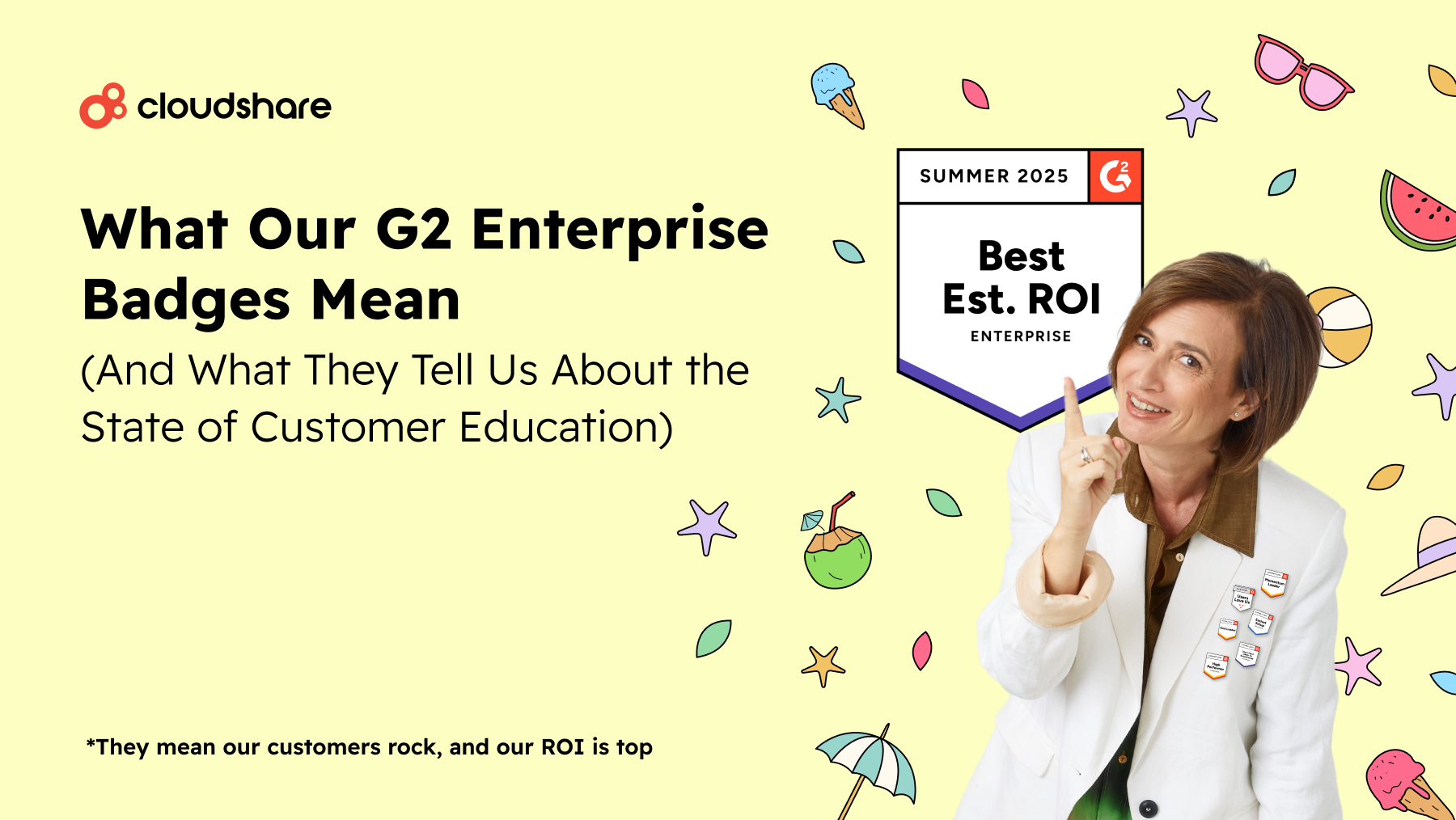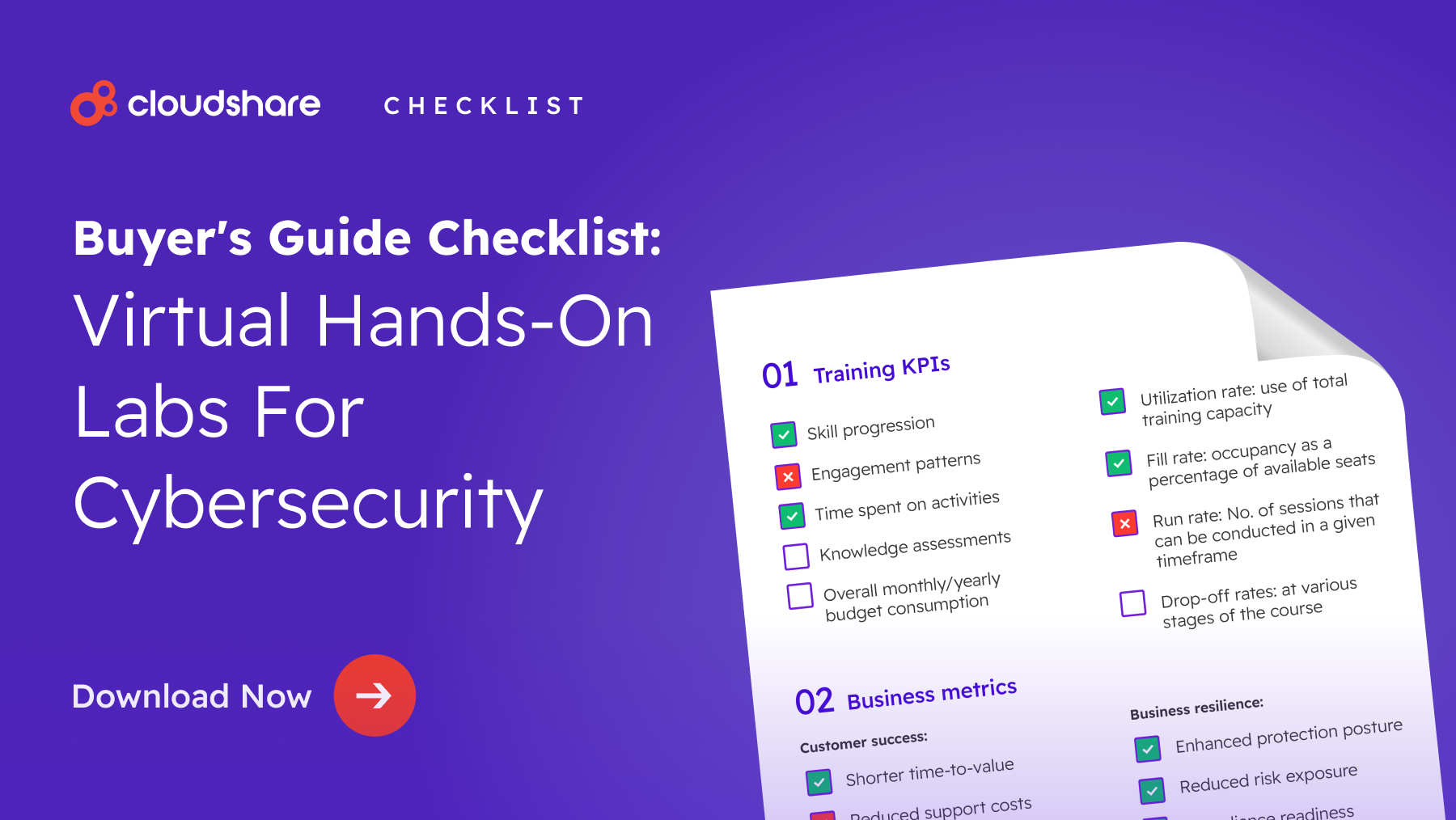Virtual training
Sales Metrics vs. Customer Retention Metrics — Which Should Training Departments Focus On?

We recently had the opportunity to attend CEdMA 2022. Our time at the conference was incredibly enlightening—especially our discussion group, which included decision-makers from VMWare and MongoDB. There, we learned that there’s a massive change happening in the software space.
Organizations are increasingly shifting their focus from sales performance measurement to measuring customer retention, NPS score, expansion, and renewals. This was echoed by all discussion groups, indicating a clear trend. People are moving away from pre-sales efforts and resource spending and refocusing on post-sales efforts.
Training is an inseparable part of this transition. But is it too soon for training departments to fully embrace customer retention metrics? Should you leave sales metrics behind?
And moreover, how should these metrics be applied across the organization?
For Sales Teams: Training is Still About Capturing Customers
Sales enablement training will always be necessary for any successful SaaS company. You need to ensure that your salespeople have a thorough understanding of your company. This includes:
- The benefits of your products and services.
- Compelling use cases.
- Demographic information about customers.
- Technical details about your solutions.
- Information about competitors.
- Customer training and usage data.
As you’ve probably guessed, the goal of this training is to drive sales and increase overall sale value. Sales teams can also leverage training platforms for proof of concept and demo purposes, giving prospects a far more interactive and engaging look at their software. From your perspective, this obviously means that the metrics by which sales teams measure their success are highly relevant to your department, albeit only if they are contextualized alongside usage data.
For instance, you might find that 90 percent of prospects convert when using an interactive POC, but only 60 percent convert without one. Alternatively, you might note that customers who complete your onboarding tend to spend more than those that don’t. You might even take things a step further, and note through your internal training which sales tactics have the highest success rate.
51 Best Practices to Boost Customer Software Training

Training and Customer Retention Go Hand-in-Hand
While sales is all about bringing in prospects, customer success is about keeping them there. Customer success teams are interested in reducing churn, improving the user experience, and upselling/cross-selling. While some internal training is necessary for these professionals — they need to understand how to use your products and interact with customers, after all — the real value for this department is in customer training.
By providing customers with a sandboxed, interactive environment in which they can explore and learn about a product, customer success teams effectively kill two birds with one stone. They help ensure customers’ know-how to get the absolute most out of their software, resulting in greater overall satisfaction and engagement. A training solution can also serve as a troubleshooting tool if and when something goes wrong.
Again, these metrics are invaluable for demonstrating the ROI of your department if you’re able to contextualize them with training data. You might consider how your NPS has increased with the introduction of a new training solution, or note that customers who complete your training are 20 percent likelier to renew.
Alignment Between Sales and Retention is the Key
So, which matters more to your training department — sales metrics or retention metrics?
The truth is that neither matters more than the other. While customer retention is fast becoming the main area of focus in the SaaS sector, sales metrics are still an important indicator of growth and an excellent way to measure a company’s overall health. And where training is concerned, both sales metrics and retention metrics are, with the proper context, invaluable.
Sales metrics can also be used as a measure of how effectively you’re training and equipping your sales teams and a means of determining which tactics work (and which don’t). As for customer retention metrics, they allow you to identify, assess, and eliminate potential bottlenecks in your organization’s onboarding and customer education processes.
Lastly, by aligning the two sets of metrics with one another, the C-Suite can help align the two departments as well. Your sales team can benefit from insights into what your customers want, while your customer success team can use data about sales to identify cross-sell and upsell opportunities amongst long-time customers. They can also more effectively work together to make the journey from prospect to recurring customer as smooth and seamless as possible.
It’s Time to Put Customer Retention in Focus
We now live in a post-sales world.
Because of the subscription economy, retention metrics are more important than they’ve ever been. At the same time, they must be contextualized through the metrics you use to measure sales performance. And both sets of metrics must be applied to the wider organization, and evaluated in the context of all available data on customers and sales.
This is not something you can achieve carelessly. It requires that you begin planning well in advance, laying the necessary groundwork across sales, customer success, and customer education. Because at the end of the day, these three departments are ultimately all part of the same whole — and each one has a pivotal role to play in the customer journey.



